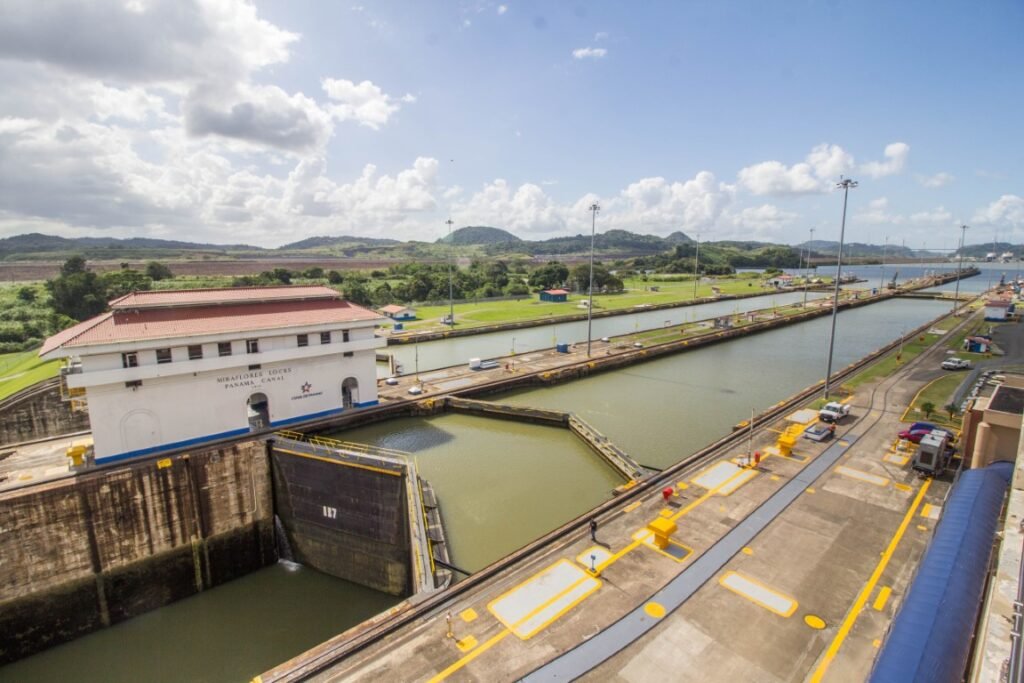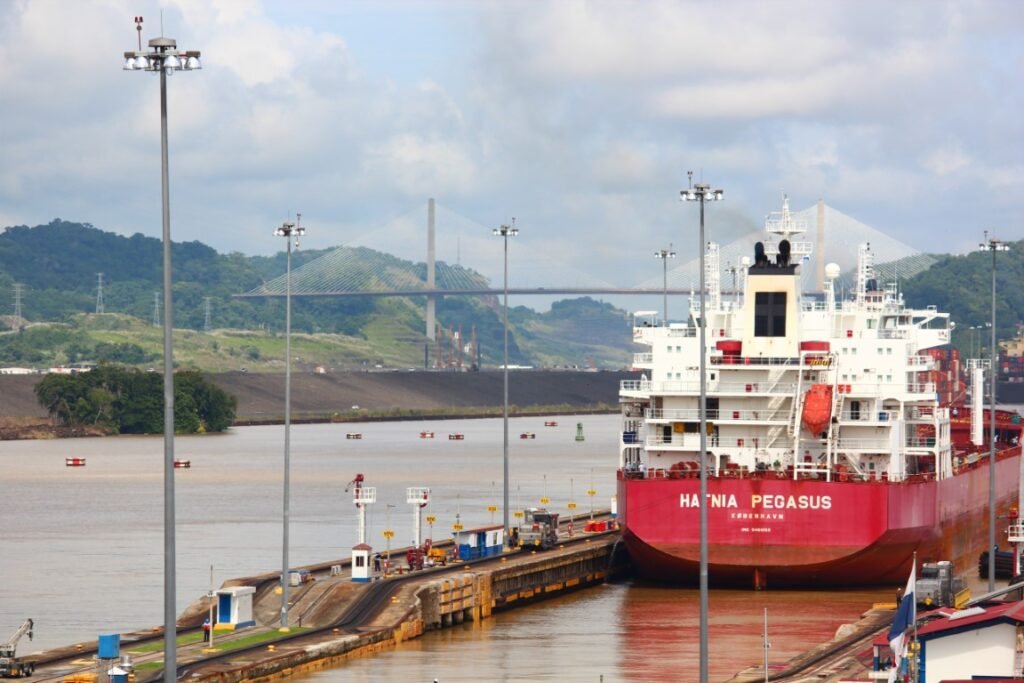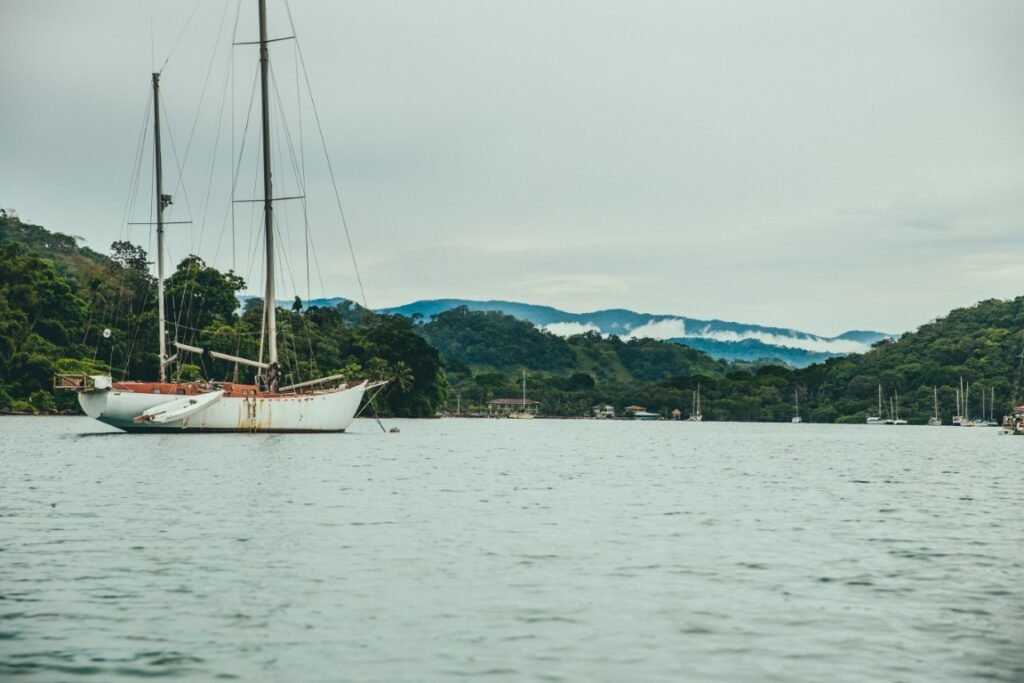The Panama Canal is a large canal that connects the Atlantic Ocean to the Pacific Ocean, passing through the country of Panama. It is approximately 50 miles long and was completed in 1914 after a decade of construction by the United States.
The canal is a critical waterway for global maritime trade, allowing ships to avoid the longer and more dangerous route around the southern tip of South America. The canal’s construction was a significant engineering feat, involving the excavation of a large portion of land, the construction of multiple locks and dams, and the creation of a large artificial lake in the middle of Panama. Also Panama Canal and it’s Impact on World Trade

In 1999, control of the canal was transferred from the United States to Panama, marking a significant moment in the country’s history. Today, the canal continues to be a vital shipping route, with thousands of ships passing through it every year.
History of Panama Canal
The 48-mile-long (77 km) international waterway known as the Panama Canal allows vessels to pass between the Atlantic Ocean and the Pacific Ocean, saving about 8000 miles (12,875 km) from a journey around the southern tip of South America, Cape Horn. Interestingly, it lies at latitude 9 degree north, where the North American Continental divide goes down to one of its lowest points.
The canal construction created a dam which led to the formation of the Gatun lake on the northern part of the isthmus.
The idea of creating a canal over the isthmus of Panama goes back to the 15th century. One of the first countries to attempt construction was France. The team was led by Count Ferdinand de Lesseps, the builder of the Suez Canal in Egypt.
Although they planned for a sea-level canal in the 1880s, they faced many challenges, such as the spread of yellow fever and malaria. De Lesseps realized that the task was difficult and decided on a lock canal. However, they had insufficient funds.
Also Read 10 Panama Canal Fun Facts – Fascinating
After understanding the riches of Peru, Ecuador, and Asia and evaluating the time it took the gold to reach the ports of Spain, it was suggested in 1524 to Charles V, the King of Spain, that cutting out a piece of land somewhere in Panama, the trips would be made shorter and the danger of taking the treasures through the cape would rationalize such an enterprise.
A survey of the isthmus was ordered, and an operational plan for a canal was subsequently drawn up in 1529. The European wars and the thirst for controlling kingdoms in the Mediterranean Sea put the project on permanent hold.

In 1534 a Spanish bureaucrat suggested a canal route close to that of the now-present canal & shortly abandoned its interest in the channel.
Various surveys between 1850 and 1875 showed that only two routes were practical, one across Panama and another across Nicaragua. In 1876 an international company was organized; two years later, it obtained a concession from the Colombian government to dig a canal transversely to the cape.
In 1899, the US Congress created an Isthmian Canal Commission to observe the potential of a Central American canal and to advise a route. The commission first decided on a path through Nicaragua but later reversed its verdict. The Lesseps Company offered its assets to the United States for $40 million.
Read 8 Amazing Panama Canal facts no one Knows
President Theodore Roosevelt and the new state of Panama signed the Hay-Bunau-Varilla treaty, by which the United States guaranteed the liberty of Panama and secured a continuous lease on a 10-mile strip for the canal. Panama was to be compensated by an early payment of $10 million and an annuity of $250,000, beginning in 1913. This strip is now known as the Panama Canal Zone.
Construction of Panama Canal

The construction of the Panama Canal began in 1904 and was completed in 1914, taking a total of 10 years to build. The project was undertaken by the United States government, which had acquired the rights to the canal zone from France, which had previously attempted to construct the canal but was unable to complete it.
The construction of the canal was a massive undertaking and involved a workforce of tens of thousands of people, including engineers, laborers, and support personnel. The construction was made more challenging by the region’s tropical climate, which brought with it heavy rainfall, intense heat, and diseases like malaria and yellow fever.
To build the canal, the United States dug a large trench across the Isthmus of Panama, creating a waterway that connected the Atlantic and Pacific Oceans. They also built a series of locks and dams to manage the water levels and to allow ships to pass through the canal. The construction of the canal required the excavation of millions of tons of earth and rock, which was then transported away by railway or ship.
Despite the challenges, the Panama Canal was completed on time and on budget, and it remains one of the greatest engineering feats of the 20th century. Today, the canal continues to be a vital shipping route, and it plays a crucial role in global commerce and transportation.
Also Read 5 Exotic Cities in Panama to Visit
Sure, here are some additional details about the construction of the Panama Canal:
- The construction of the canal was one of the most ambitious and challenging engineering projects of its time. It required a significant amount of planning, coordination, and resources, as well as the use of new technologies and engineering techniques.
- One of the biggest challenges of the construction was dealing with the region’s tropical climate, which brought with it heavy rainfall, intense heat, and humidity. These conditions made it difficult to work for extended periods and also made workers susceptible to diseases like malaria and yellow fever.
- To address the disease problem, the United States implemented a series of measures, including the widespread use of mosquito nets, the draining of swamps, and the fumigation of buildings. These measures helped to reduce the incidence of disease and allowed the workforce to continue working on the canal.
- The construction of the canal was also marked by a significant loss of life. It is estimated that over 20,000 workers died during the construction, most of whom were from diseases like malaria and yellow fever. This loss of life led to significant changes in public health policies, including the development of vaccines and improved sanitation measures.
- The construction of the canal also had a significant impact on the local environment and communities. The excavation of millions of tons of earth and rock led to the destruction of forests, wetlands, and other ecosystems. Additionally, the influx of workers and the development of infrastructure led to significant changes in local communities and cultures.
- Despite the challenges, the construction of the canal was a significant success, and it opened up new opportunities for global commerce and transportation. Today, the canal remains an important waterway, and it plays a critical role in global trade and transportation.

Interesting facts about the Panama Canal:
- The Panama Canal is approximately 50 miles long and takes an average of 8-10 hours for a ship to pass through.
- The canal was completed in 1914 and has been in continuous operation since then, with over one million vessels having passed through it.
- The construction of the canal cost approximately $375 million at the time, which is equivalent to over $8 billion in today’s currency.
- The canal was initially built and operated by the United States, but control of the canal was transferred to Panama in 1999.
- The canal was constructed by digging a large trench across the Isthmus of Panama, and it includes a series of locks and dams to manage water levels and allow ships to pass through.
- The canal is one of the busiest waterways in the world, with approximately 14,000 ships passing through it each year.
- The Panama Canal has had a significant impact on global trade and transportation, allowing ships to avoid the longer and more dangerous route around the southern tip of South America.
- The canal is a critical source of revenue for Panama, with tolls from canal traffic representing a significant portion of the country’s economy.
- The canal has undergone several major expansion projects over the years to accommodate larger ships and increased traffic, with the most recent expansion completed in 2016.
- The Panama Canal is considered one of the greatest engineering feats of the 20th century and has been designated as a UNESCO World Heritage Site.
You may also like,
Frequently Asked Questions
1. Who built the Panama Canal and why?
It was President Roosevelt who negotiated the Hay–Bunau-Varilla Treaty which gave the US, the control of the Canal Zone. He also oversaw the realisation of long goal to build a trans-isthmian-canal. It was built to reduce the time and transportation costs of shipping goods between Atlantic and the Pacific coasts.
2. Which country owns the Panama Canal?
The Panama Canal is owned and administered by the Republic of Panama since the management rights were transferred from the joint US-Panamanian Panama Canal Commission in 1999.
3. Why was the Panama Canal a successful project?
The Panama Canal project altered maritime trade, commerce and travel. It decreased the transit time from the east coast to the western coast of America by half. It was a technological marvel and even the American Society of Civil Engineers called it one of the seven wonders of the modern world.
4. What are the benefits of the Panama Canal?
The Panama Canal has helped to reduce Greenhouse Gas Emissions on our planet aby enabling more efficient maritime transportation of goods. It also saves fossil fuels by reducing fuel consumption per cargo unit.
5. How many workers died during its construction?
The construction of the Panama Canal was difficult, challenging and equally dangerous. Most labourers were poor and hailed from Barbados, Maritinique, Guadeloupe. About 25,000 workers lost their lives during the construction of the canal.

